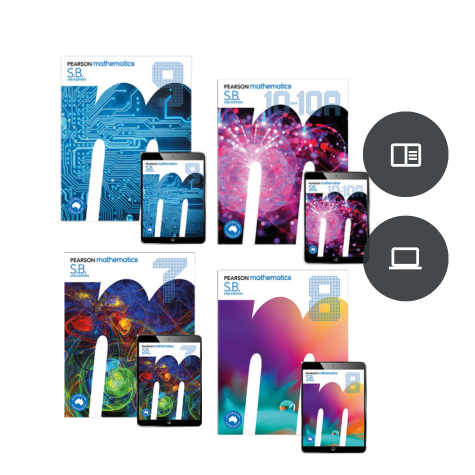In 2016, only 22% of physics, 14% of engineering, and 35% of mathematics graduates were female. This underrepresentation of women in STEM gets carried through to the workforce, but research suggests that it starts early: girls as young as 9 are less confident in their math abilities than boys of the same age. As educators, what can we do to address this issue?
When it comes to a country’s economic growth, it’s a no-brainer: its people and their talents are key drivers. Women make up half the population, so it’s not hard to see how sustainable economic growth will be compromised if their talents are not utilised. Actually, since 1974, the rise in female employment has boosted the Australian economy by 22%. And it’s been estimated that employing 6% more women would boost the economy by a further 11%.
Closing the gender gap isn’t just about dollar bills, though. It’s about basic human rights: women have the right to equal representation in the workplace, equal opportunities, and equal pay.
Where are our women in STEM?
The case for more women in work is strong, and yet, when it comes to STEM in particular, we’re losing them at every stage of the pipeline. At university about 40% of junior academics in all STEM fields are female, but only 17% of senior professors are women. Furthermore, in 2016, only 22% of physics graduates, 14% of engineering graduates, and 35% of mathematics graduates, were female.
Things look a little rosier in medical and health-based courses, where women are dominant, but this changes once they reach the workplace. In medicine, women remain underrepresented in formal leadership positions and certain speciality areas.
For example, only 12.5% of hospitals with more than 1000 employees have a female chief executive and 28% of medical schools have female deans. When it comes to specialist roles, there are distinct gender patterns at play. Around half of pathologists, paediatricians, obstetricians and gynaecologists are women. But they are ridiculously underrepresented in orrthopaedic surgery (6%), vascular surgery (11%) and cardiothoracic surgery (12%).
Sure, the Aussie economy might suffer if this continues, but more importantly, just think of the goldmine of genius we’re failing to tap into. How many new discoveries are we missing out on?
Why are women so outnumbered in STEM?
Some maintain that this all comes down to a matter of preference: women don’t want to pursue STEM studies and careers. But why then, are 40% of all STEM students female? It certainly doesn’t look like women don’t want to pursue STEM.
These same people argue that boys and girls show different preferences from birth and point to studies in which male newborns like to look at mechanical stimuli, while female newborns like to look at faces. But really, there are no major neurological differences between the sexes. And even if there were, brains are flexible, malleable, and changeable. Children don’t display preferences and abilities based on their gender, they learn them based on what we, as a society, expect a boy or girl to be.
In an article for The Age, Elizabeth Croft, Dean of the Faculty of Engineering at Monash University, states that preference doesn't have anything to do with it: data tells the real story. A recent literature review around gender disparity in STEM cites ‘masculine culture’ as the reason that engineering, computer science and physics are ‘top-heavy’ with men. She argues that it’s not that women prefer other fields, it’s that they suspect that they will not feel welcome in STEM fields. And until women feel they belong and can succeed in STEM fields, it’s unlikely they’ll choose them over more welcoming options.
Separate studies have found that women in STEM workplaces are subject to derogatory comments, stereotyping and harassment, opportunity gaps, and biases about how women scientists should look. It’s also been shown that they are paid less than men, promoted less than men, and have less access to prestigious work. In March 2018, an Australian neuroscientist was removed from a speaking event when she told organisers she would be weeks away from giving birth. It’s not hard to see why women leave their hard-earned STEM jobs behind.
What role do teachers play in closing this gap?
This is a huge issue: one that affects universities and workforces all over the world. But research has shown that in Australia, the gender disparity starts early: girls as young as nine are less confident in their math abilities than the boys in their class. So, while it is crucial to address this issue at all levels, here are some ways teachers can make STEM more accessible for the young women in their classrooms.
1. Provide role models: talk about the great female scientists of the past and the present.
Marie Curie might immediately spring to mind at this point - and for good reason - her achievements in science are a huge source of inspiration for scientists all over the world. She received her education during a time of major political unrest: while she was at high school, laboratory instruction was removed from Polish schools, and then the University of Warsaw refused to admit women.
Nevertheless, she graduated from school early - top of her class - and completed her tertiary studies in secret. She went on to conduct pioneering research on radioactivity and became the first ever woman to win a Nobel Prize - as well as the first person to win one twice.
As important as it is to highlight stories like these from history, it’s imperative that we teach students about the research being conducted by women now. For example:
-
Professor Michelle Yvonne Simmons is a quantum physicist who took out the 2018 Australian of the Year Award. Together with her team, she developed the world’s first transistor radio from a single atom and is currently looking to build a quantum computer capable of solving problems that would otherwise take thousands of years, in minutes.
-
Scientist Jen Campbell is working in the field of human genetics, looking at genetic differences and similarities between Aboriginal nations and language groups. She believes science is a great way to learn multidisciplinary skills that can be adapted to just about anything,
-
Sonic astrophysicist Wanda Diaz Merced lost her sight in her early 20s, but found a way to pursue her dream of studying the stars anyway. Through the process of ‘sonification’ Merced discovered that she could use her ears to detect patterns in stellar radio data, and could uncover connections obscured by graphs and visual representation.
When we show young women what female scientists have achieved, and continue to achieve, we’re showing them what they can be. As Croft says, “if they can see it, they’ll know they can be it.”
2. Support and encouragement go a long way to building confident STEM learners.
Here are six ways you can support and encourage girls in your STEM classroom:
-
It’s common for girls to think they lack natural ability in STEM. So instead of telling students they are ‘smart’ or praising correct answers, recognise effort and persistence and ask parents to do the same at home. Students should also be taught that effort and experience, rather than natural ability, are mainly responsible for success in the STEM disciplines.
-
Include some tasks that somewhat ambiguous, or ill-structured, to encourage more thought and effort. Use activities that prompt students to follow prescribed procedures, but also undertake self-driven, unstructured exploration on an iPad/computer, as risk-taking and innovativeness are important attributes in STEM. When girls struggle, give them appropriate support, but try not to immediately ‘bail them out’. Stress that it’s completely OK if they don’t ‘get it’ straight away.
-
Emphasise the process, not just the product – ask girls to explain and justify their work and encourage them to solve problems in more ways than one.
-
Link STEM concepts to real world examples. Show them how they can apply what they have learnt. Help them visualise situations (e.g. calculating sports scores, cooking, coding an app, working out discounts) in which they are using and applying STEM knowledge so that they can build a better disposition towards STEM and a positive self-perception.
-
Call on girls just as often as boys to answer questions and assist with demonstrations.
Give it time.
The gender disparity issue in STEM is embedded deep in our culture and society, so getting to the core of the problem and actually making an impact will take time. But if we want answers to science’s biggest questions, we need to act now, because we’re going to need our girls just as much as our boys.




